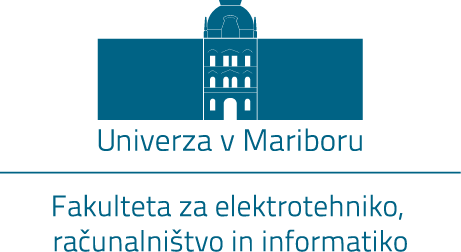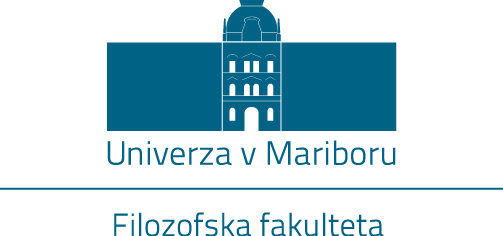
-
State accredited construction engineer and architect Viktor Accetto, a descendant of an immigrant mason family from Friuli, mentioned in Maribor as early as 1869. In 1922, he established the “Accetto in drugovi” (Accetto and Associates) construction company together with Avguštin Accetto and Oskar Skušek, the manager of the National Bank. Until 1939, he worked mostly in Maribor, where he designed and constructed several villas, residential houses, commercial buildings and bridges, led the renovation of buildings and the construction of the city’s sewerage system.
-
After finishing his studies in Fine Arts Education at the Pedagogical Academy in Maribor, Drago Ačko completed the study of Painting at the Academy of Fine Arts and Design in Ljubljana. He actively co-created the artistic image of Slovenska Bistrica, where he participated in exhibitions of the local Klub ljubiteljev likovne umetnosti (Art Lovers Club) in the 1980s. He later worked at the Cultural Institute of Slovenska Bistrica. He paints, creates graphic art, sculpts and restores artwork as well as participates in group exhibitions. In his painting, he focuses on abstraction, which is based on building a composition by using the principle of contrast.
-
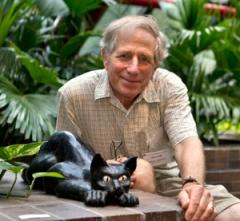
Robert Lee Adzema is a painter and sculptor, who primarily creates sundials. In his artwork made of bronze, iron, stone and wood, he combines abstract forms with concrete functionality.
-
Stojan Batič is one of the most important sculptors of the 20th century in Slovenia. He is the author of numerous monuments and public monuments, while his statuettes are also prominent and were heavily influenced by literary sources. One of his most recognisable sculptural series was created on the topic of miners, for which he received the Prešeren Award. Batič's gallery with a permanent exhibition of his work was opened in the Zasavje Museum in 1988. He regularly exhibited at home and abroad and received numerous awards and prizes for his work, which is kept in museum and gallery collections at home and abroad.
-
Saša Bezjak is an art pedagogue, paintress and sculptress. She produces paintings, drawings, sculptures, graphic art, photographs, videos and performances; she has also illustrated several books. She teaches art classes for adults and children, participates in sculpture symposia and colonies, and regularly exhibits her work at home and abroad. Her work is characterised by recognisable, rudimentary, expressive drawing with a sometimes almost child-like effect, which she transfers to sculpture, performance and embroidery as well. She deals with intimate topics, in which a wide spectre of the human experience of being is recognized. Her interpretation of it attests to her having a spontaneous creative impulse and following a subconscious flow.
-
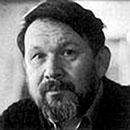
Janez Boljka is written in the history of Slovenian art primarily as an innovative sculptor. By using new approaches to creating sculptures, which are based on the specific recycling or welding of waste metal materials, he went from creating realist figural art to an ever sharper surrealism and, finally, abstraction. The core of his oeuvre is an animal series of various dimensions (among others Buffalo, Rhino, Bull), numerous public monuments (e.g., Monument to the National Liberation Front victims in Žale) and sculptures in public spaces (e.g., Atomic Venus, Maribor’s Forma viva). With his later graphic works, Boljka is placed among the typical and leading representatives of the Ljubljana Graphic Arts School.
-
Ida Brišnik Remec is one of Maribor’s artists who worked in the second half of the 20th century. She regularly exhibited at home and abroad, often together with her husband Marjan Remec, a painter. At first, she worked as an art pedagogue, then she decided to follow an independent art path. She is the author of several stained glass windows for religious spaces, the best known among which are the ones in the church on Ptujska gora depicting The Canticle of Creation by St. Francis of Assisi. Her oeuvre also encompasses paintings, watercolours, drawings and pastels, while she also prepared an outline for a tapestry for the main altar of the Church of St. Joseph in Studenci in Maribor, the only such example in Slovenia.
-
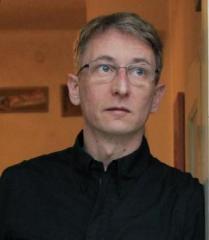
Andrej Brumen Čop is one of the most recognisable names of contemporary Slovenian art. His oeuvre encompasses several different subjects; among them the works filled with distinctly personal topics, such as the painful experience of growing up in an anxious, restricting environment, homosexuality and homophobic responses from the environment stand out the most. The painter critically depicts the current problems of minorities and an individual’s distresses either in a subtly felt manner or brutally and horrifyingly. He teaches Drawing and Painting at the Faculty of Education in Ljubljana and manages its PeF Gallery. He has exhibited his works in numerous exhibitions at home and abroad; his work is kept in several Slovenian and foreign art collections.
-
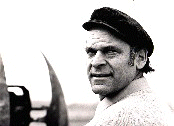
Luciano Ceschia was a sculptor who did not complete a classical art education, but learned how to sculpt in various ateliers and master workshops. After living abroad for a few years, he started working with ceramics at the beginning of the 1950s. He fired his realistic, partially expressionist and, according to some critics, folk creations in his home furnace in Coia near Tarcento.
-
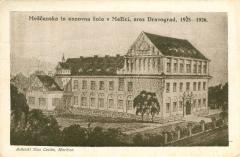
In the time between the First and Second World Wars, Max Czeike, an architect with German roots, who, according to preserved notes, studied at the Vienna academy under Otto Wagner, left a mark in Maribor with his work. The architect, who was oriented towards Historicism, left approximately 40 buildings in Maribor, among which family villas and apartment buildings prevail. Besides residential construction, Czeike focused on solving technical and urban questions; he also dealt with the problem of lighting the Franciscan church in Maribor, where he collaborated with Plečnik, and with designing furniture, ceramic furnaces and tombs. He is most known for arranging Mariborski otok, the town's swimming pool, which was the largest public project executed in Styria between the wars.
-
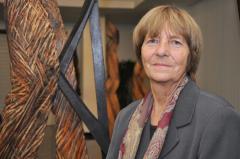
The artistic activities of Dragica Čadež are rich and versatile. They encompass numerous sculptural series, which have followed and completed one another since the middle of the 1960s until today. Despite first exploring materials such as plaster, concrete and stone, the author soon dedicated herself to working with wood. The only exception was the year 1986, when she participated in Forma viva in Maribor.
-
Bogo Čerin is an internationally renowned photographer and an important protagonist in the field of developing art photography in Slovenia, focusing on women’s nudes. He participated in the foundation of the Stolp Photogallery in Maribor and was later its head. He was also the president of the Maribor Photoclub and a member of the art council of the Photographic Association of Slovenia. He is an honorary member of numerous societies and photographic associations, among which the London Salon of Photography is worth mentioning. On several occasions, he served as a member of a jury at international salons of photography at home and abroad. He received numerous prizes for his work, among others the prestigious awards of the International Federation of Photographic Art (FIAP).
-
Ivo Čerle is one of the authors who introduced themselves at the Maribor Circle Photography exhibition in Maribor in 1971. He acquired his basic knowledge of photography in the photo laboratory of the Metalna Maribor propaganda department, where he worked, and then improved it in the Maribor Photoclub. In 1972, he was named a Candidate Master of Photography by the Yugoslav Photographic Association, and in 1974 the AFIAP (Artiste FIAP). On several occasions he was named among the most successful photographers exhibiting in Slovenia and Yugoslavia. He worked as a graphic designer, which influenced his photographic work. He produced photo graphics, isohelia, photomontages and photography, while his oeuvre also includes painting. He exhibited his work in numerous exhibitions at home and abroad and received a number of awards for it.
-
Milan Černigoj was an architect from Maribor, who graduated from the architectural school in Ljubljana under Jože Plečnik. He established himself in the 1950s. In the scope of the Projekt Maribor, he and his brother Jaroslav took over the leading role in the field of industrial construction. His Metalna buildings represent the largest achievement in setting up prefabricated halls in steel construction in post-war architecture in Slovenia. Černigoj's architectural work creates the impression of monumentality with the sense of transparent organisation of building masses and interior spaces (Maribor Railway Station, Hotel Slavija).
-
Sculptress Irena Čuk is known for her memorial sculptures in northeastern Slovenia and her restoration work. She completed her studies of Sculpture and a specialized study of Restoration and Conservation at the Academy of Fine Arts and Design in Ljubljana. In the first half of the 1990s she was a member of the Mi (Us) art group, with which she exhibited at home and abroad. She works as a restoration specialist at the Maribor Regional Office of the Institute for the Protection of Cultural Heritage of Slovenia. She received the Stele Award for restoring the wooden ceiling and the painted wooden gallery (empora) in the succursal Church of the Holy Spirit near Dravograd. Her oeuvre encompasses sculptural work, drawings, collages and graphic works.
-
Stevan Čukalac is a representative of the younger generation of artists, who focuses on graphic art. He was drawn to graphic art during his studies at the Faculty of Education in Maribor, where he already graduated in the subject of drawing in graphic arts. He continues a specialised study of graphic arts at the Academy of Fine Arts and Design in Ljubljana. He works as a professor of Art at the Secondary School of Design in Maribor. He received awards for his work at graphic contests (Beograd, 2007, and Berlin, 2008). He focuses especially on the intaglio technique, which allows him an accentuated line and the contrasting juxtaposing of surfaces in shades of varying intensity.
-
Aleksander Dev is part of the generation of Maribor architects who were focused on modernity between the wars. After graduating under Plečnik, he focused on functionalism and was, as an independent architect, one of the pioneers of functionalist architecture in pre-war Maribor. His oeuvre encompasses mostly residential and business buildings as well as interior design. Among his most recognized works are the Osrednji zavod za zavarovanje delavcev (Central Institute for the Insurance of Workers), the Dravska Banovina Savings Bank, Gospodarska zavarovalna zadruga Drava (Drava Economic Insurance Co-operative) and Hutter's block of flats. His work has been presented in several group architectural exhibitions.
-
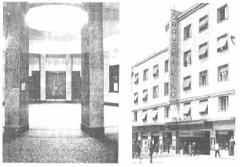
Maribor architect Herbert Drofenik studied in Graz. He prepared plans for buildings in numerous cities around the world (FIAT buildings), while the majority of his buildings can be encountered in Maribor. Even though he worked as a building construction planner (Elektroprojekt), he was most successful in the field of interior design (commercial premises, Velika kavarna (Theresienhof) etc.). In the Maribor milieu he is most known for the Udarnik cinema, the Corpus Christi Church near the Vurnik Colony and Velika kavarna (Theresienhof) on Glavni trg (Main Square). Today, little is known about his oeuvre, much like it is little known that he obtained a PhD in architecture (his doctoral dissertation is titled Die geplante Stadt), with which he became the second scientist in this field (the first was Max Fabiani).
-
Ivan Dvoršak is one of the main representatives of the Maribor Circle and one of the key protagonists of the Maribor Photoclub. He was the first photographer to establish himself within the Maribor Circle and to influence the activity of his younger colleagues with his work. He was also named the Candidate Master of Photography of the Yugoslavia Photographic Association and was presented with the AFIAP (Artiste FIAP) distinction. The height of his photographic oeuvre is his work from the 1960s, which paved the way for the aestheticism of the Maribor Circle, and his work from the 1970s, which was produced in the scope of the Maribor Circle. He participated in exhibitions at home and abroad and received numerous awards for his photographic and design work.
-
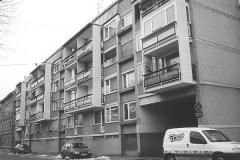
Maribor architect Vlado Emeršič completed the study of architecture at the Ljubljana school of architecture under professor Edvard Ravnikar. Immediately after, in 1955, he began working at the Zavod za regulacijo mesta Maribor (Institute of Urban Planning Maribor) (in 1954 it was renamed Komuna projekt), where he stayed until his retirement in 1988. With his work, Vlado Emeršič left a visible mark in the centre of Maribor. His architecture is characterised by rational and thought-out design (the blocks of flats on Kersnikova ulica), a great sense for construction (the Mariborski teden event) and his choice of material (reinforced concrete shells on the market on Kidričev trg (Kidrič Square)). He presented his opinion on modern architecture on numerous occasions in daily newspapers (Večer etc.).
-
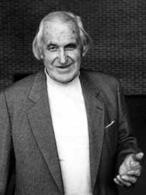
Architect Danilo Fürst, a representative of Plečnik's school, introduced technical novelties to Slovenian architecture, among which the plans for ready-made and prefabricated construction as well as the usage of curved ceilings and roofs made of prestressed concrete stand out. Fürst's varying oeuvre consists of three phases. The first phase (1937-1941) encompasses the period under the influence of his teacher, during which he gradually created his own character (introduction of technical novelties, such as the principle of the warm air heating system). The second phase (1945-1960) is characterised by the renewal of the state, which demanded new architectural principles in residential construction (precast construction, prefabricated and terraced houses), the construction of schools and industry, where Fürst became one of the leading architects in the area of the former Socialist Federal Republic of Yugoslavia. This period is marked by large industrial projects (the Kidričevo factory of...
-
Štefan Galič is one of the most important Slovenian graphic artists of the last third of the 20th century. He developed a recognisable style independent of present art trends. He was especially known for his skilfully made colour woodcuts that brought him international recognition. The height of his work is the graphic series Fossils, which reveals a sharp sense for colour transitions and the maximum processing possible of the matrix in the woodcutting technique. He received a number of awards for his graphic work at home and abroad; his work is kept in numerous art collections. The Galič atelier is declared a cultural and historical monument. The Štefan Galič memorial room is on display in the Galerija – Muzej Lendava.
-
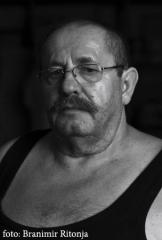
Sculptor and restorer Viktor Gojkovič is one of the most productive artists in northeastern Slovenia, whose oeuvre encompasses exhibition sculptures and numerous public sculptural works. He was the founding member of the Grupa Junij art group and a member of the PA-71 group. He is the author of several public monuments and fountains in Styria, Carinthia, and the Prlekija and Prekmurje regions. With his work, he furnished a number of church spaces at home and abroad. He was employed at the Maribor Regional Office of the Institute for the Protection of Cultural Heritage of Slovenia as a restorer, where he led large restoration projects, among others the restoration of the plague column by Josef Straub in Maribor and its replacement with a copy. He received the Stele Prize for Lifetime Achievement for his long-lasting restoration work.
-
Darko Golija is one of the most prominent contemporary Slovenian sculptors. He was one of the last students of Maribor sculptor Slavko Tihec. In the first half of the 1990s, he was a member of the Mi (Us) art group, with which he exhibited at home and abroad. He worked as an associate professor of Sculpture at the Faculty of Education of the University of Maribor. He exhibits at home and abroad, participates at symposia of sculpture and colonies and takes part in sculpture contests. He received several awards for his work, among which is the first prize for the erection of a monument to Herman Potočnik Noordung, which he obtained at a contest for arranging a roundabout on the Slovenj Gradec ring road.
-
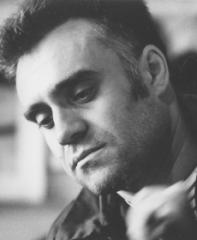
Samuel Grajfoner is one of the most prominent Maribor artists working in the field of graphic arts and is a representative of the Ljubljana Graphic Arts School. After finishing his sculpture studies, he completed a specialized program of graphic art and went abroad to improve his knowledge. He was a member of the Mi (Us) art group, with which he exhibited in the first half of the 1990s. His oeuvre encompasses graphic art, drawings, sculptures and paintings. Grajfoner's graphic work is marked by an expressive character and the use of a black-white graphic language. He often combines differing graphic techniques and works with formats of large dimensions. He received a number of awards for his work, and his graphics are kept in public collections of graphic art at home and abroad.
-
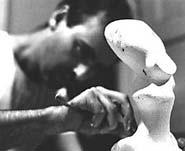
Bradford Graves created the majority of his enormous oeuvre in stone, which he chose as the centre of his creative research owing to its – according to the sculptor – mystical connection to earth. In his work, he connected a modernist form with elements of ancient cultures (mostly myths from the antiquity) and placed a great deal of attention on the integration of his organic sculptures into their immediate environment (e.g., This Mirror Can Crack Stone series). A large part of the artist’s oeuvre can be found in the Bradford Graves Sculpture Park in New York.
-
Aleksandra Saška Gruden works as a multidisciplinary artist and is actively involved in creating Maribor's art scene. She participates in projects by the MKC Maribor Youth Culture Centre, since 2010 she has been the program leader of the Inkubator Izložba exhibition venue. She designed and participated in numerous art projects in Maribor, for example, in space interventions that encouraged visitors to actively participate, such as the Ideacollectors. She carried out several performances alone or in cooperation with other artists. She regularly exhibits at home and abroad and is the author of numerous public installations in Slovenia and abroad.
-
Photographer Miran Mišo Hochstätter was born into a family of photographers. His father Josef established the Hochstätter Foto studio in Vetrinjski dvorec (Viktring Court), which Mišo Hochstätter took over in 1994 and captured numerous people from Maribor in his camera lens, individuals from the world of science and culture as well as other personages. Since the 1970s he has been one of the protagonists of the Maribor art scene, he dedicated himself to art photography and graphic design. In 1995, he opened the Hochstätter masters’ gallery in the Hochstätter Foto studio, where he prepared a number of photographic exhibitions. He exhibited his work at home and abroad and received a number of prizes and awards.
-
Maja Hodošček is an artist of the younger generation, who works primarily in the field of video and photography. After studying Fine Arts at the Faculty of Education in Maribor, she obtained her master's degree from the Dutch Art Institute in Arnhem. As a custodian at the Gallery of Contemporary Art in Celje she prepares exhibitions and the educational program. She received the OHO Award for the Promised Land video, which, among other things, enabled her a residential stay in the ISCP atelier in New York. She deals with social topics and the current issues of different social groups. She presents her works at exhibitions and video festivals at home and abroad, and participates in various international projects.
-
Besides his teacher Josef Straub, Josef Holzinger is among the leading Baroque sculptors in Slovenian Styria. With his sculptural creations, which are still perceived as one of the peaks of Baroque art in Slovenia, he importantly enriched the religious buildings in Maribor and its vicinity.
-
Jasna Hribernik is a director and one of the first video artists in Slovenia. She has created several documentaries about sports, history, natural heritage, technological development and the social changes connected to it; she has also made a number of film portraits of artists. She has participated in several dance and theatre performances, concerts or musical and visual events and exhibitions with her movie segments. Parallel to her movie production, she has been producing videos since the 1990s; these videos are characterised by a recognisable authorial language. She takes part in film and video festivals and exhibitions at home and abroad; she has received a number of awards. Her work is kept in gallery and museum collections in Slovenia.
-
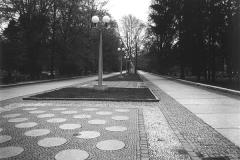
Ljubo Humek was an architect and a pioneer among Maribor’s urban planners. In 1949 he created a regulation plan for Maribor, which is, in its fundamental parts, still in force today. He introduced new traffic schemes to the construction of the town (the transfer of the railway and bus terminal to the right riverbank of the Drava river remained unrealised), planned to build a new city centre in the Tabor District (unrealised), he enforced new bases for the renovation of the old town centre, rearranged squares and park surfaces with new plantations and by preserving previously planted trees, while he was primarily interested in the implementation of a new type of residential construction, which followed Swedish principles. At his initiative, Zavod za regulacijo Maribora (Institute of Urban Planning Maribor) was founded in 1952, which was replaced by the Komuna projekt in 1954.
-
Janko Andrej Jelnikar is one of the main photographers to present themselves at the Maribor Circle Photography exhibition in Maribor in 1971. His rich photographic oeuvre is extremely versatile. It is characteristic of him to research different techniques, from nonconventional photography with an artistic emphasis and a deviation from the normative laws of the medium, to technical perfection in the field of pure photography and experimenting with new techniques with the help of modern technology. In the Maribor Photoclub he gained relevant knowledge of photography and an insight into the avant-garde trends in the field of world photography. He participated in several exhibitions and contests at home and abroad, and received many awards for his work, which is kept in museum and gallery collections in Slovenia.
-
Jernej Jemec is known for his innovative approaches in the fields of graphic art and painting, such as turning graphics into 3D and researching the sound of paintings. He tackled these two questions as early as in his undergraduate and postgraduate studies at the Academy of Fine Arts and Design in Ljubljana; before that he graduated in Fine Arts Education at the Faculty of Education in Maribor. Recently, he has been focusing on the Metaphysics of social systems project, in which he interprets social reality and the temporary status of ideologies by using his own perspective, which deviates from analytical thought. He presents his work at exhibitions at home and abroad.
-
Zmago Jeraj was one of the most prominent and prolific Slovenian artists of the second half of the 20th century, whose oeuvre encompasses painting, gouache, drawing, graphic art, illustration, photography, scenography and sculpture. He worked as an artist, art teacher, publicist, author of texts about art, designer, scenographer, art editor and an art exhibition organizer. He was also active in a wider area of the former Yugoslavia, where he exhibited and was one of the initiators of the New Photography exhibition. He worked as a professor of Painting and Drawing at the Academy of Fine Arts and Design in Ljubljana. He received numerous awards for his work, which is kept in institutional collections at home and abroad.
-
Zdravko Jerkovič was a member of the Mi (Us) art group, with which he exhibited in Slovenia and abroad in the first half of the 1990s. He takes part in art symposia and colonies as well as in exhibitions at home and abroad. He created several sculptures for public spaces. His oeuvre encompasses sculptures, spatial installations, objects, drawings, and graphic art; he also does photography. His sculptures are characterised by an interest in questions about art form, which is reflected in his use of different materials and objects from everyday life. In some places, he transgresses the line between sculpture and painting. The new British sculpture of the 1980s left a visible mark especially on his early period.
-
Branimir Jerneić is one of the most prominent authors to present themselves at the Maribor Circle Photography exhibition in Maribor in 1971. He was a member of the Zagreb Photoclub for a number of years; between 1965 and 1972 he worked in Maribor and joined the photographers who exhibited at the Maribor Circle Photography exhibitions. He was named the EFIAP (Excellence FIAP) by the International Federation of Photographic Art (FIAP). Before working in the Maribor Photoclub he focused mostly on colour photography and its further processing in photographic laboratories. In Maribor, he was attracted anew to black and white photography; when developing negatives, he exposed them to additional light so that he could intensify the dark surfaces on the positive. He used strong contrasts and produced compositions that were submerged into darkness and from which illuminated details emerge.
-
Richard Jordan is one of the leading Viennese architects of Late Historicism. He was especially active in the field of religious architecture, where he deviated from the Neo-Gothic style of his teacher Friedrich Baron Schmidt and focused on Neo-Romanesque style. At the request of the pater-guardian of the Maribor Franciscan monastery, Kalist Heric, he prepared the plans for the Franciscan Church of St. Mary Mother of Mercy, with which Maribor acquired one of the best examples of Late Historicism in Slovenia.
-
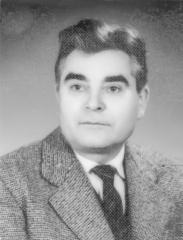
Maks Kavčič is one of the most prominent representatives of Maribor painting in the first three decades after World War II. He is responsible for establishing organized art activity in Maribor in the first years after World War II, as he was active in several art fields, not only as an artist, but also as an organizer, restorer and pedagogue. His art language is based on colour and an expressive stroke, while his most frequently depicted motifs are landscapes, figural art and flower still lifes. He dedicated himself to painting, drawing, and book illustration, while he was also written down in the history of Slovene theatre as an excellent scenographer.
-
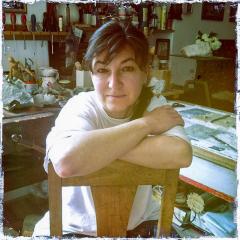
Metka Kavčič has drawn attention to herself with her sculptural work and installations, where she combines different materials and unconventional approaches and where the influence of her conservation-restoration work can be seen. After completing her studies of Sculpture at the Academy of Fine Arts and Design in Ljubljana, she enrolled in a specialized study of Conservation and Restoration and worked for several years at the Ptuj Regional Museum as a wood and stone conservator-restorer. Her oeuvre encompasses sculptural works made from traditional materials and motifs as well as installations and sculptural series that surpass the established views of sculpture, e.g., Metka's skewer (2004). She regularly exhibits at home and abroad.
-
Stojan Kerbler is the most successful Slovenian photographer of the 20th century and is also internationally renowned. In 1963 he co-founded the ŠOLT Photogroup; later, he was very active in the Maribor Photoclub. He participated in numerous exhibitions and photography contests at home and abroad, and received more than 500 awards and prizes; especially the Haložani series, for which he obtained the Prešeren Fund Award, garnered a lot of attention. By compiling literature and documentation about Slovenian and Yugoslav photographers, he contributed to the systematic research of photography in Slovenia; he conceptualized several photographic exhibitions or participated in their preparation.
-

Dušan Kirbiš is one of the main representatives of post-modernism in Slovenia. His oeuvre is characterised by various artistic currents, such as abstract colourism in his early period, more expressive work with a dramatic, melancholic mood in the spirit of Neo-Expressionism, richly layered landscapes of unsettling gestures with a net structure of dots or photographs, and a return to pure abstraction of unified colour fields with inscriptions that take on the role of a horizon in subconscious landscapes. He works as an associate professor at the Faculty of Natural Sciences and Engineering in Ljubljana. He regularly exhibits at home and abroad; his work is kept in art collections in Slovenia and abroad.
-
Branko Kocmut is one of the leading urban planners and architects of the second half of the 20th century in Maribor and Slovenia. He was one of the first modern urban planners in Slovenia. In his plans, he connected architecture and urbanism. With his solutions, he co-shaped Maribor’s modern urban image, while he is also responsible for the preservation of Maribor’s old town centre's architectural image, since he adhered to the principles of monument protection in construction, advocated for the protection of the gabarits, and set the bases for Maribor’s further urban development. He frequently worked with his brother Ivan Kocmut, with whom he received the Prešeren Award.
-
Gabrijel Kolbič is one of the central names in the sculpture of 20th century Maribor. After the Second World War, he was the only academically educated sculptor in Maribor. He is the author of several public monuments in Maribor and northeastern Slovenia. He had an important role as an art pedagogue and mentor of the youth sculpture club, from which several well-known artists originated. He also produced paintings, sgraffito, drawings, graphic art and illustrations. Echoes of Realism, Impressionism and Expressionism can be seen in his sculptural oeuvre. He also uses stylization and tense volumes inspired by Aristide Maillol. He received numerous awards and prizes for his work, which is kept in several Slovenian museum collections.
-
Stane Kregar is one of the most important artists of the 20th century in Slovenia. He is the leading representative of post-surrealism in Slovenia and a pioneer of modernism. As an extremely productive artist he created profane and religious art and drew new trends in both areas. In 1971 he received the Prešeren Award for Lifetime Achievement. His work is kept in public and private collections in Slovenia and abroad, while the largest collection of his work is in the Kregar Gallery at St. Stanislav's Institution in Šentvid. Kregar's oeuvre encompasses paintings, watercolours, gouaches, drawings, frescoes, sgraffiti, mosaics, stained glass windows, tapestries, paraments, intarsias, illustrations and book designs.
-
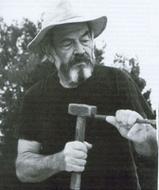
Momčilo Krković was one of the leading sculptors of monumental sculpture in former Yugoslavia. His wide oeuvre, which encompasses around 500 statuettes and approximately 30 monuments is distinctly dual. In his early creative period, after completing his specialisation in Sculpture under Lojze Dolinar at the Academy in Belgrade, the young artist focused on stone sculptures and was creating monumental volumes with rough surfaces, where he preserved allusions to human figures despite using severe abstraction. A person or their position in the dehumanized world of the 20th century is the central theme of his early series (Man – fortress, partly Man – castle) and monuments (among others Encounter, Forma viva in Maribor). After 1980 the cubist, anthropomorphic forms were replaced by soft, imaginary landscapes in clay, where the artist moved away from the hard, concrete world (the series Appearance of forgotten places).
-
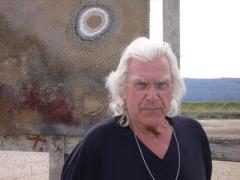
The sculptural oeuvre of Tone Lapajne encompasses three creative periods. At first, he focused on figural sculpture, then he changed his sculptural language under the influence of new abstraction and joined the Slovenian group of Neo-Constructivists. In 1972, after participating at Forma viva in Kostanjevica na Krki, he gradually moved away from Neo-Constructivism. Content-wise, he returned to the themes that he had addressed in his early period, while he still preserved the approach of spatial design and the construction of the statue. After 1975 he gradually abandoned sculpture. He started to devote himself exclusively to painting with acrylic colours and original painting materials – the Ljubljana Marshes soil.
-
Peter Lešnik was a member of the Maribor Photoclub and one of the photographers who presented themselves at the Maribor Circle Photography exhibition in Maribor in 1971. He was named the Candidate Master of Photography of the Yugoslavia Photographic Association and an AFIAP (Artiste FIAP). He participated in exhibitions at home and abroad and received numerous awards. After moving to Ljubljana in 1965, he remained a member of the Maribor photo club and participated in Maribor Circle Photography exhibitions. His photography is marked by a sharp sense for contrasts, tonal gradation within the grey scale and a thought out composition. In regards to motifs, he focused on figure, portraits and landscape motifs.
-
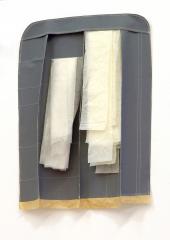
Maribor artist Polona Maher focuses on sculpture, painting, drawing and installation, where she uses different materials that she converts into an art message medium by using the non-conventional language of art. Her oeuvre encompasses several series; it is worth mentioning the Cartons with motifs of geometrical and architectural structures, originating in rural architecture, among which her hayracks are the most famous. Her artistic activity relates to Slovenia and Italy with which she has been connected since her parallel studies at the Academy of Fine Arts in Bologna. She participates in exhibitions in Slovenia and abroad; her work is kept in Slovenian and foreign art collections.
-
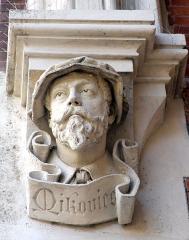
Besides Hans Pascher, Graz architect Robert Mikovics is one of the most important architects of Late Historicism in Styria. He was a member of the Christian Art Society of the Diocese Graz-Seccau and worked closely with its representative, Johann Graus. He contributed to the enforcement of a specific version of Neo-Renaissance in Styria ("Styrian Neo-Renaissance").
-
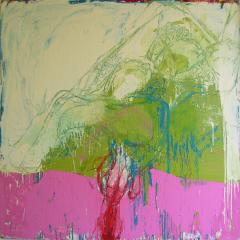
Slađana Mitrović is an artist of the younger generation, who also deals with the theoretical side of art as a professor of Fine Arts and a scientific researcher. She is the author of several expert articles and a co-editor of the monograph Love and sexuality: anthropological, cultural and historical crossings. In regards to theory, she focuses on researching the anthropology of art. Her art work is characterised by erotic themes and a feminist view of sexuality; she is uncovering an insight into the taboo topics of human intimacy. In her work, she also draws attention to the questions of gender identity in contemporary society and the problematic attitude towards intellectual work and education.
-
Dragiša Modrinjak is one of the most recognisable photographers from Maribor, who worked for several years as a photo reporter for the Večer newspaper and the Naš dom magazine; he was also one of the photographers who presented themselves at the Maribor Circle Photography exhibition in Maribor in 1971. He raised photo reportage photography to a higher level. In numerous photographs he met the criterion for producing not only a documentary photograph, but also an artistic one. One of the reasons for this was his membership in the Maribor Photoclub and working with photographers who exhibited at the Maribor Circle Photography exhibitions. He had a large collection of old cameras, photography equipment and old photographs, and he was an advocate for founding a museum of photography in Maribor. He participated in numerous exhibitions at home and abroad and received a number of awards for his work.
-
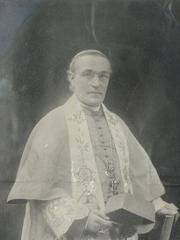
Between 1889 and 1922, Michael Napotnik was the Prince Bishop of Lavant and one of the most active members of the Austrian Episcopal Conference against the movement Away from Rome (mass crossing of the German speaking Catholic population to the Protestant religion). He was especially important as a great speaker; in his sermons, which he frequently published, he discussed theological as well as historical and art topics in a way that was understandable to the people.
-
Jasmina Nedanovski is an artist of the younger generation, who focuses on graphic art and drawing. After graduating from the Faculty of Education in Maribor, she completed specialised studies of Graphic Arts at the Academy of Fine Arts and Design in Ljubljana. She works in traditional graphic techniques; she is especially fond of woodcut and, according to the critics, is one of the leading representatives of this technique in her generation. In regards to motifs, still lives prevail; she depicts small objects from everyday life that bring her joy and which she depicts with kind affection. She regularly exhibits at home and abroad; her work is included in selections of international exhibitions of graphic art.
-
Painter Samo Pajek was a member of a group of young Maribor artists called Mi (Us), with which he exhibited at home and abroad in the first half of the 1990s. In 2004 he participated as a member of the international group FARO at a symposium in Norway and exhibited in several Norwegian cities. He works as a professor of Fine Arts at Tretja gimnazija in Maribor. He is devoted to an expressive art language, defined by an intensive colour scale and a vitalist gesture, while a restless treatment of various motifs can be detected in his content. His oeuvre encompasses paintings, installations, watercolours, collages and drawings. He takes part in art colonies and workshops and regularly exhibits at home and abroad.
-
Painter Lajči Pandur belongs to the generation of painters who obtained their diplomas at the Zagreb art academy between both wars and established themselves after the war. His involvement in the field of art was diverse, since besides exhibiting at individual and group exhibitions at home and abroad, he also worked as an art pedagogue, later as a higher education professor at the Faculty of Education in Maribor; he also helped organize art events and participated in art colonies. His oeuvre encompasses paintings, watercolours, drawings, graphics and book illustration. His motives include peasant genre, landscapes, portraits and still lifes.
-
Hans Pascher was one of the most active architects of Late Historicism in Styria, however, he also worked elsewhere, e.g. Carniola and the Princely County of Gorizia and Gradisca. With time, the architect, who was schooled in Vienna, moved away from Viennese examples under the influence of Johann Graus, the president of the Catholic Society of Art of the Diocese of Graz-Seckau, and started working mostly in the »Styrian Neo-Renaissance« style, which Graus advocated. He also produced Neo-Romanesque and Neo-Gothic buildings and prepared plans for church furnishings, especially altars.
-
Ana Pečar is an artist of the younger generation, who produces videos, sound, performances and VJs. She is active in the Maribor art scene as well as in the international art scene. She participates in various exhibitions and festivals of new media art, and is frequently a guest in art residencies abroad. She is furthering her knowledge in art workshops at home and abroad and has received several art scholarships for her work. She takes part in projects that combine different types of art, for example, video, dance and music, and is the author or co-author of a number of video installations and sound performances.
-
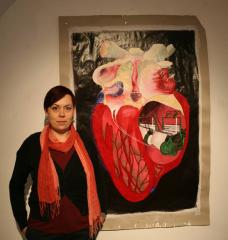
Maja Pegan is one of the artists of the younger generation, who actively co-shapes the Maribor art scene. Within the Hiša! society she leads projects and the pedagogical program as well as the Graphic Arts Centre. Before that, she led art workshops in the Pošta Cultural-Art Society. She studied Fine Arts at the Faculty of Education in Maribor, prepared her graduation thesis at the Printmakers Workshop in Edinburgh, completed her master’s degree in Aberdeen, and participated in various projects. Her oeuvre encompasses paintings, installations and graphic art. Her work is kept in collections in Italy and the United Kingdom.
-
Božidar Pengov is among the generation of sculptors, who began their artistic career during the interwar period. His oeuvre is characterised by his collaboration with Jože Plečnik, with whom he furnished several religious spaces and profane buildings, while in the post-war period, he produced a number of sculptures and monuments depicting the topic of the National Liberation Front and the victims of the Second World War. Among these are the statue Decision and the Monument to the Hostages in Šentvid above Ljubljana, for both of which he received the Prešeren Award. In his drawing oeuvre, a shocking series of drawings from Dachau stands out especially. In it, he captured the entire horror of the dehumanisation and torture of human beings in the name of the Nazi ideology of hatred.
-
Jože Plečnik is the leading Slovenian architect of the 20th century, who left his mark in Slovenia, Vienna and Prague. By moving away from the mainstream trends in architecture and striving to create timeless architecture, he formed a recognisable style that places him among the most famous names of 20th century western architecture. With his architectural interventions he tried to accentuate the visible and hidden potentials of space and raise it on a symbolical level. He shaped Plečnik's Ljubljana by using original spatial solutions. In architecture, he searched for a national style; he created a synthesis of ethical principles and cultural and historical values through the use of refined symbolism.
-
Zora Plešnar is one of the photographers who presented themselves at the Maribor Circle Photography in 1971 in Maribor. She delved into photography in 1968, when she joined the Maribor Photoclub. She was named the Candidate Master of Photography by the Yugoslav Photographic Association and given the title of AFIAP (Artist FIAP) by the International Federation of Photographic Art (FIAP). She participated in numerous exhibitions at home and abroad and received a number of awards for her work. She works with black and white photography, where, in comparison to other photographers from the Maribor Circle Photography exhibitions, her palette is lighter. Her photography is characterised by directness and casualness as well as a sense for an innovative approach in composition.
-
Boris Podrecca is the most prominent contemporary Slovenian architect, who is internationally renowned. He works in Vienna, where he has an architectural bureau with two branches in Venice; he also works as a professor, is the author of scientific and popular publications, an architect and designer. He has participated in numerous architectural competitions and has won several times with his projects, especially in Central Europe. He is also responsible for the fact that Plečnik is recognised internationally and in Slovenia, as well as for promoting Slovenian architecture abroad. He has received a number of awards for his work, among which are the Order of Chevalier des Arts et des Lettres, presented to him by the former French president François Mitterand.
-
Oton Polak is one of the most prominent Maribor artists of the second half of the 20th and the beginning of the 21st century. He was active on the Maribor art scene as an artist, art pedagogue and the leading representative of professional organizations. His style is distinguished by master drawing, which he transferred to other painting mediums, while in regards to motifs, he remained dedicated to the town veduta, which was one of the central and most recognizable motifs throughout his creative period. Stylistically, he originated in descriptive motifs and came close to abstraction, which towards the end of his artistic production became a staple in his oeuvre.
-
Maribor artist Borut Popenko makes paintings, installations, videos and photographs. He actively co-shapes Maribor's contemporary art scene. Among his latest recognisable projects is the establishment of the Salon uporabnih umetnosti in 2013 in the former Maribor Casino, which functions as a space for creativity, exhibitions, art and social events. His paintings are characterised by geometric abstraction, while his installations are multisensory and interactive. Besides participating in numerous exhibitions at home and abroad, he has stayed in art residencies and taken part in art colonies in Slovenia and elsewhere in Europe.
-
Uroš Potočnik is one of the most recognisable artists of the younger generation, who attracted attention with his works connected to photographs. He first studied Fine Arts Education at the Faculty of Education in Maribor, then he went on to study at the Academy of Fine Arts and Design in Ljubljana, where he graduated and later finished a specialised study of Painting. He received several awards for his work during his studies and later. He participates in art colonies, and regularly exhibits at home and abroad. He is the program leader of the Velenje Youth Centre's gallery. He also makes music. His oeuvre includes sci-fi illustration, computer graphics, watercolours, videos and photography. He experiments with various art techniques and deals with topics from everyday life, the private family environment, nature and ecological issues.
-
Painter Brigita Požegar Mulej studied Comparative Literature and Literary Theory at the Faculty of Arts in Ljubljana and Painting at the Academy of Fine Arts and Design in Ljubljana. Since completing her studies, she has been working as a freelance artist, while she also runs a private painting school. She organizes art colony in Lancovo near Radovljica, prepares exhibitions at the Casa Brigita gallery in her home and regularly exhibits at individual and group exhibitions.
-
Nataša Prosenc is one of the most recognisable artists in the field of video in Slovenia; she works between Slovenia and Los Angeles. She was already drawn to video during her studies at the Academy of Fine Arts and Design in Ljubljana, where she studied at the Department of Design. After finishing her studies, she worked as a graphic designer and made music videos for television. She received several scholarships from Slovenian and foreign institutions, among which the Fulbright Program scholarship stands out, which enabled her to attend specialised studies in Los Angeles. She has taken part in a number of film festivals at home and abroad; she regularly exhibits at home and abroad and has received numerous awards for her work.
-
Marjan Remec is one of the most recognized authors of the Maribor art scene. He worked as an art pedagogue at Prva gimnazija, where he ran the Avla art exhibition centre for 25 years. He participated in art colonies and exhibited at individual and group exhibitions at home and abroad. His oeuvre encompasses paintings, watercolours, drawings and mobiles. He also dedicated himself to art critique, writing poetry and literary texts. His painting oeuvre is characterized by a lonesome human figure, placed in mysterious environments of blue. He was a master of watercolour technique.
-
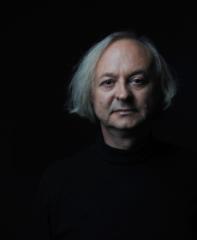
Oto Rimele is one of the most prominent Maribor artists, known as a representative of abstract colourism. After 2000 he started dealing with how light affects colour; he emptied the surface of painting objects and turned the attention towards their edges, intensified by colour. The latter, in dialogue with natural light, creates the optical effects of radiating colour or colour shadow. He also achieved the effect of dissipating the edges of an artwork or its dematerialization and expansion into space. One of the peaks of this phase was an exhibition titled Illuminations in the monastery church in Kostanjevica na Krki (2003˗2004), for which he received the Prešeren Fund Award. He regularly exhibits at home and abroad; his work is kept in several Slovenian and foreign collections.
-
Branimir Ritonja is one of the most prominent contemporary photographers from Maribor. He is the artistic director of the Stolp Photogallery and the president of the Maribor Photoclub. At the start of his photographic journey, he engaged with documentary photography, when he published photographs in print media at the end of the 1970s. He has been dedicating himself to art photography since the 1980s. His oeuvre encompasses portraits, landscapes, genre scenes, as well as social documentary photography. He also includes photography in spatial installations. He received a number of prizes at home and abroad for his work, among others he was awarded with the AFIAP (Artiste FIAP) distinction and the title of the Master of Photography of the Photographic Association of Slovenia, as well as a bronze medal at the Salon des Beaux-Arts de Paris.
-
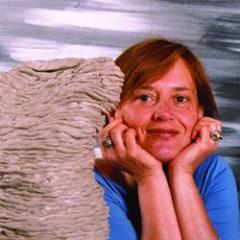
With her work, Mojca Smerdu had a key influence on the development of new trends in Slovenian sculpture in recent decades. Despite the fact that she worked with various materials, she was most comfortable creating in clay. In her oeuvre, small and medium size sculptures prevail, as well as work that was included in the open public space of parks and city surfaces. Among these is the massive, stylized sculpture Bloom, which was created in 1983 in the scope of the fifth symposium of sculpture Forma viva in Maribor.
-
Lucija Smodiš is a multimedia artist and curator and works in the field of cultural management. She is an undergraduate student of Fine Arts at the Faculty of Education in Maribor. She actively co-shapes the Maribor art scene, especially in the scope of the cultural centre Pekarna magdalenske mreže; she curated exhibitions in the K18 Gallery, was the program leader of the Central station exhibition place, and since 2013, she has been a program co-worker of the Guest Room Maribor. She was the instigator of the Stoptrik international stop motion animation festival, within which she works as a producer. She works in the field of video, sound, performance and spatial installation.
-
Damijan Sovec is among the most recognisable contemporary comic book artists in Slovenia. He is the author of comics with satirical content and ironic humour, a caricaturist and illustrator. Among his most famous work is the banner comic Directions of development, which he published in the eponymous column of the Večer newspaper. He completed his studies of Fine Arts at the Faculty of Education in Maribor with a graduation thesis about political caricature in Slovenian humorous newspapers. He works as an art pedagogue at the Gornja Radgona Primary School. He has illustrated a number of children’s books, and also works in animation and design. He was awarded for his comic book and illustration at an international festival or competition.
-
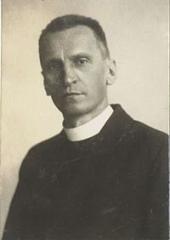
Avguštin Stegenšek was one of the pioneers of Slovenian art history. Prince Bishop of the Diocese of Lavant, Dr. Michael Napotnik, enabled him the study of art history and archaeology in Rome and Graz in order for him to later prepare the art topography of the Diocese of Lavant. When he was studying in Rome, he wrote considerably about Roman monuments (published in periodicals at home and abroad); after his return to Maribor, he focused exclusively on Styrian art heritage. His topographies (The Deanery of Gornji Grad, Maribor 1905; The Deanery of Slovenske konjice, Maribor 1909) represent the beginning of art topography in Slovenia. The creation of the remaining volumes was prevented by Stegenšek's illness and the First World War.
-
Marjan Stojko is a member of the Maribor Photoclub and one of the photographers who presented themselves at the Maribor Circle Photography exhibition in Maribor in 1971. He was awarded with the title Photography Instructor and First Class Amateur Photographer by the Yugoslavia Photographic Association. He has exhibited at numerous exhibitions at home and abroad and was awarded for his work several times. His oeuvre encompasses black and white and colour photographs and slides; in recent years he has developed an interest in digital photography. A rough grain surface that creates picturesque art effects is a recognisable element in his photographs. In his early work, he was interested in the motive of motion, which he presented in one of his most famous series, Dance, and stayed true to it in his later work as well.
-
Maja Strmecki is a graphic artist of the younger generation. After completing her studies of Fine Arts at the Faculty of Education in Maribor, she improved her knowledge in the Printmakers Workshop in Edinburgh; she later finished a specialized Graphic Art program at the Faculty of Fine Arts and Design in Ljubljana. In her work, she combines different graphic techniques, e.g. etchings, aquatints and reservage; she includes collage in some of her work. Her oeuvre encompasses abstract and figural works of art, in which she reflects a person's inner feelings and anguish. She presents her work in individual and group exhibitions.
-
Urška Stropnik Šonc is one of the most prominent contemporary illustrators in Slovenia. She was already drawn to book illustration during her studies at the Faculty of Education in Maribor, where she graduated with a thesis on this topic. She illustrates children’s picture books, textbooks, children’s periodicals and promotional material. Her paintings decorate the paediatric departments of the Velenje Health Centre and Dr. Franc Derganc General Hospital in Šempeter pri Novi Gorici. She is the author of visual source material for the Dr. Eco puppet show, performed by the FRU-FRU theatre. She frequently presents her work in individual and group exhibitions.
-
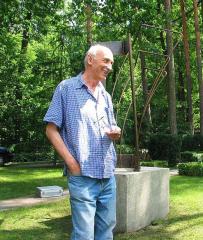
The diverse oeuvre of Polish artist Maciej Szankowski encompasses sculptures of varying dimensions, created in different, frequently mixed media. His creative path, which travels from Minimalism to Constructivism and Conceptualism, is united by connecting sculpture with architecture and landscape. In the 1970s when he created his Window for Forma viva Maribor, Szankowski dedicated himself mostly to researching the inner space of sculpture, its transformation, connectedness with the environment and interaction with the viewer.
-
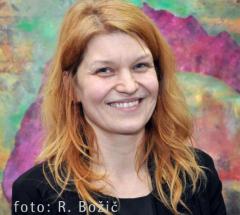
Natalija Šeruga has had a recognisable art language since the beginning of her artistic path, which places her among the most prominent Slovenian artists of the middle generation. Her work reveals a subtle world filled with a mystical, mysterious mood, where thoughts about life and death, the transience and the fragile beauty of the world are intertwined; where in the shining horizons of the galaxies, the infinity of the universe is unfolding, reminding us of the origins of man and his final station of being. She regularly presents her work at exhibitions at home and abroad; her work is kept in art collections in Slovenia and Austria. As a mentor she heads an art school in Maribor.
-
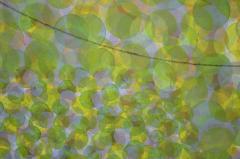
Maribor painter Simona Šuc has been an initiator of several theoretical-art meetings in Gaj nad Mariborom, where Slovenian artists of the younger generation have presented themselves. She was the co-founder of the TU society, which carried out several space interventions in Maribor, with which it drew attention to the issue of emptied city centres after the construction of shopping and entertainment centres. She participated in several restoration projects of religious heritage in northeastern Slovenia. Since the end of the 1990s, she exhibits regularly at home and abroad and participates in various art projects.
-
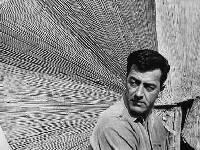
Slavko Tihec is one of the most important artists of the second half of the 20th century in Slovenia. The professor of Sculpture at the Academy of Fine Arts and Design in Ljubljana, who received numerous awards at home and abroad, was always known as an exceptional innovator in his creations. His oeuvre from the 1960s was characterised by sculpture of traffic lights or connected radial cell nuclei (e.g., The Dark Traffic Light); a decade later he focused on kinetic art, which he explored by using mixed techniques and new materials in the so-called aquamobiles. In the second half of the 1970s, he created the famous sculptures shaped like geometric bodies (e.g., The Monument to the National Liberation Front in Maribor); the sculptor and graphic artist frequently complemented their layered surfaces with paintings or graphic art.
-
Simon Tihec was one of the photographers who presented themselves at the Maribor Circle Photography exhibition in Maribor in 1971, and was a long-time organizer of photographic life in Maribor. He was awarded with the titles Teacher of Photography, Candidate Master of Photography and AFIAP. He was a recurrent president of the Maribor Photoclub, which, under his presidency, became one of the most esteemed photo clubs in the former Yugoslavia. As an exceptional pedagogue he led several photography courses and raised a number of new generations of photographers. He exhibited around the world and received several awards and prizes for his work. In 1987, the Maribor Photoclub named him the first and only Honorary President.
-

Even though Lino Tine makes sculptures out of various materials, such as stone, wood, metal and concrete, his work has one common denominator: critics Giorgio Kaisserlian, Carlo Munari, Marco Valsecchi, Francesco Vincitorio, Vanni Scheiwiller and Tommaso Tini denote him as a complex artist – a visionary.
-
Vinko Vedlin was a member of the Maribor Photoclub and one of the photographers who presented themselves at the Maribor Circle Photography exhibition in Maribor in 1971. In 1972, he was named a First Class Amateur of Photography by the Yugoslavia Photographic Association. He had participated at group exhibitions until 1975, when he stopped exhibiting. In his work, he focused on figure, the topic of doom and ecology. He placed emphasis on darkness, which he developed to a drastic level in the photograph Nine Crosses, and in a night time photograph The Power of Memory. Even though he later abandoned this darkness, content-wise he stayed close to the topic at the exhibitions of the Maribor Circle Photography, for example with motifs of ecological issues and man’s inclination towards destruction.
-
Janez Vidic is one of the most recognisable Maribor painters and one of the most famous illustrators of the second half of the 20th century in Slovenia. For his entire creative period, he devoted himself to illustration, for which he received several awards. He worked for a number of years as a technical editor at the Založba Obzorja Maribor publishing house, for which he illustrated numerous books and textbooks as well as contributed to the publishing house, becoming known as one of the highest quality publishing houses in Slovenia. He is the author of several monumental wall paintings and sgraffiti in Maribor and northeastern Slovenia. He was awarded for his work with the Prešeren Fund Award.
-
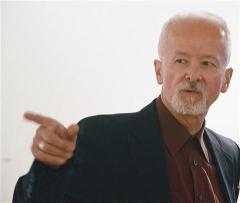
The author's diverse artistic creations and pedagogical work at the Academy of Fine Arts and Design in Ljubljana had an important influence on the development of Slovenian sculpture in the last three decades of the 20th century. In the middle of the 1970s, Lujo Vodopivec was creating concrete statues, which represent simplified, voluminous human and animal figures (verticals, laying masses, small horses and pigs). A sculpture made of reinforced concrete and placed in the open, a fountain, which he created in 1977 in the scope of the fourth Forma viva in Maribor, was also produced during that time.
-
Franjo Vršič was active as a member of Maribor’s photo club and was one of the photographers who presented themselves at the Maribor Circle Photography exhibition in Maribor in 1971. He was especially respected as a pedagogue; at numerous contests of photography, he shared his knowledge with different target groups, from students at the Technical College and the pedagogical high school to participants of courses in various work organizations. In 1969, the Photographic and Cinema Association of Slovenia awarded him the title of Teacher of Photography. He was president of the Maribor Photoclub and a recurrent member of its administration. He rarely exhibited, however, he participated in group exhibitions and the exhibitions of the Maribor Photoclub. Figural motifs, portraits, genre scenes, segments from urban landscapes and motifs of construction sites prevail in his oeuvre.
-
Ivan Vurnik is known as the pioneer of modern architecture and urbanism in Slovenia. He was credited with establishing the Department of Architecture at the University of Ljubljana. He dealt with the question of national style or national Romanticism in architecture, which was manifested the most in his building of the Cooperative Bank in Ljubljana. The peak of his Functionalist architecture is the now demolished summer swimming pool Obla Gorica in Radovljica. With his urban concepts and advocacy for quality and functional architecture he influenced the development of post-war architecture and urbanism. He received the Prešeren Award for his work.
-
Graz architect Adolf Wagner and his buildings left an important mark on Historicist architecture in Slovenia. While working as a town engineer in Ljubljana, he produced plans for churches in Tabor in Ljubljana and Šmartno pri Litiji (both in the Neo-Gothic style) and for the Ljubljana slaughterhouse, which still represent the peaks of Slovenian architecture in Late Historicism. After his departure to Graz, he prepared the plan for the Neo-Renaissance church in Teharje.
-
Matjaž Wenzel is one of the most recognisable names among Maribor’s photographers of the middle generation. As a photographer and graphic designer he participates in various art, book and other projects. He also works with video and leads photography workshops. He presents himself at individual and group exhibitions at home and abroad and has received several awards and prizes for his work. In his photography oeuvre he deals with the motif of spaces and a person’s presence in them; either interiors or exteriors with building elements, such as residential buildings. His most renowned photography series is HK, which he presented at home and abroad and for which he received the Glazer Award.
-
Franc Ksaver Zajec was the first academically trained Slovenian sculptor and the central representative of Historicist sculpture in Slovenia. His oeuvre encompasses full-figure and bust portraits, religious sculpture – especially altar furnishings –, tombstones, personifications, and mythological motifs. He established himself as a good portraitist; among his most famous works are his portraits of famous Slovenians, which he produced in various lengths and dimensions and for various purposes. He is the author of France Prešerenʼs first sculptural depiction and the first monument to Anton Martin Slomšek, which is placed in the Maribor Cathedral.
-
Ciril Zazula was an architect working in the Projekt Maribor bureau, where he planned public buildings (especially schools). In his private time, he focused on church architecture and furnishings, and between the 1960s and 1990s prepared a number of plans for rearranging and reconstructing more than forty church interiors in accordance with the liturgical directives of the second Vatican council. The only new church building he designed is the Parish Church of Sts. Cyril and Methodius in Maribor’s Tezno District. His rearrangements of church interiors show a great deal of innovation, but are extremely problematic from the perspective of art history and monument protection.
-
Maruša Zorec is one of the most prominent contemporary Slovenian architects. The most renowned are her examples of cultural heritage monument renovations, for which she has been awarded several times; her renovation of the Ormož castle outhouse stands out especially. She received the Prešeren Fund Award for the latter. Among her awarded projects is also the renovation of Vetrinjski dvor (Viktring Court) in Maribor. A recognisable feature of her interventions into architectural monuments is a clear division between the old and the new, the acknowledgement of the historical development of buildings and the use of local materials in an innovative way. She also researches Slovenian architectural heritage and advocates for its preservation.
-
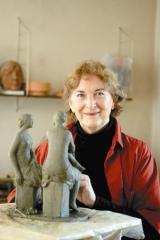
Vlasta Zorko is one of the most recognisable Slovenian artists, active in the second half of the 20th century. She finished her specialised studies at the Academy of Fine Arts in Ljubljana under the mentorship of Zdenko Kalin, and on her artistic path, she tried her hand in all of the most important sculpting mediums (bronze, concrete, wood, stone, clay, plastic). Figural motifs are predominant in her oeuvre; she depicted them in small dimensions as well as in monumental forms. Among the latter it is especially worth mentioning a number of monumental sculptures dedicated to the National Liberation Front (e.g., The Free Pohorje in Maribor and the Monument to the National Liberation Front in Lenart) and the great historical figures (The Monument to General Maister), as well as portrait sculptures of famous Slovenians. Under the influence of Henry Moore, one of her leading role models, a group of abstract sculptures of varying dimensions in which the artist explores organic, rounded...
-
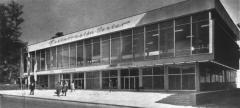
Rudi Zupan was an architect from Maribor, who graduated from the Ljubljana School of Architecture under the mentorship of Edvard Mihevc in 1951. His oeuvre is indispensable in the history of recent Maribor architecture. He developed a new type of block of flats in a residential area in Pobrežje, the so-called »Butterfly«, where each apartment has its own outside access through a gallery. His two executed projects in the city centre, the Center restaurant (demolished) and the Večer business building, were the first examples of architecture in Maribor that had unplastered stone constructions on the facade. Prefabricated elements were used for construction, the façade of the Center restaurant was made of aluminium panels and glass. Rudi Zupan also collaborated with the National Liberation Museum Maribor, where he prepared exhibitions.




